Abstract
Plants of Zea mays L. cv TX5855 were grown in a complete, well oxygenated nutrient solution then subjected to nutrient starvation by omitting either nitrate and ammonium or phosphate from the solution. These treatments induced the formation of aerenchyma close to the apex of the adventitious roots that subsequently emerged from the base of the shoot, a response similar to that shown earlier to be induced by hypoxia. Compared with control plants supplied with all nutrients throughout, N- or P-starvation consistently depressed the rates of ethylene release by excised, 25 mm apical segments of adventitious roots. Some enzymes and substrates of the ethylene biosynthetic pathway were examined. The content of 1-amino cyclopropane-1-carboxylic acid (ACC) paralleled the differences in ethylene production rates, being depressed by N or P deficiency, while malonyl-ACC showed a similar trend. Activity of ACC synthase and of ethylene forming enzyme (g−1 fresh weight) was also greater in control roots than in nutrient starved ones. These results indicate that much of the ethylene biosynthetic pathway is slowed under conditions of N- or P-starvation. Thus, by contrast to the effects of hypoxia, the induction of aerenchyma in roots of Zea mays by nutrient starvation is not related to an enhanced biosynthesis and/or accumulation of ethylene in the root tips.
Full text
PDF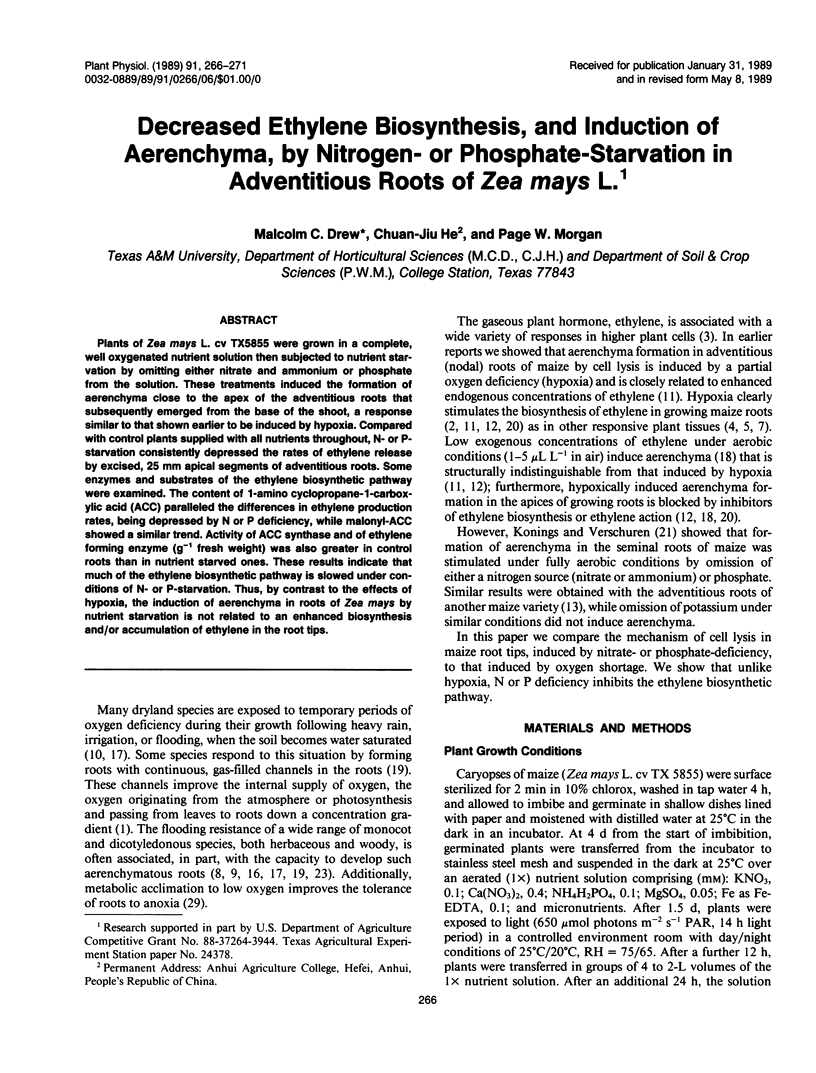
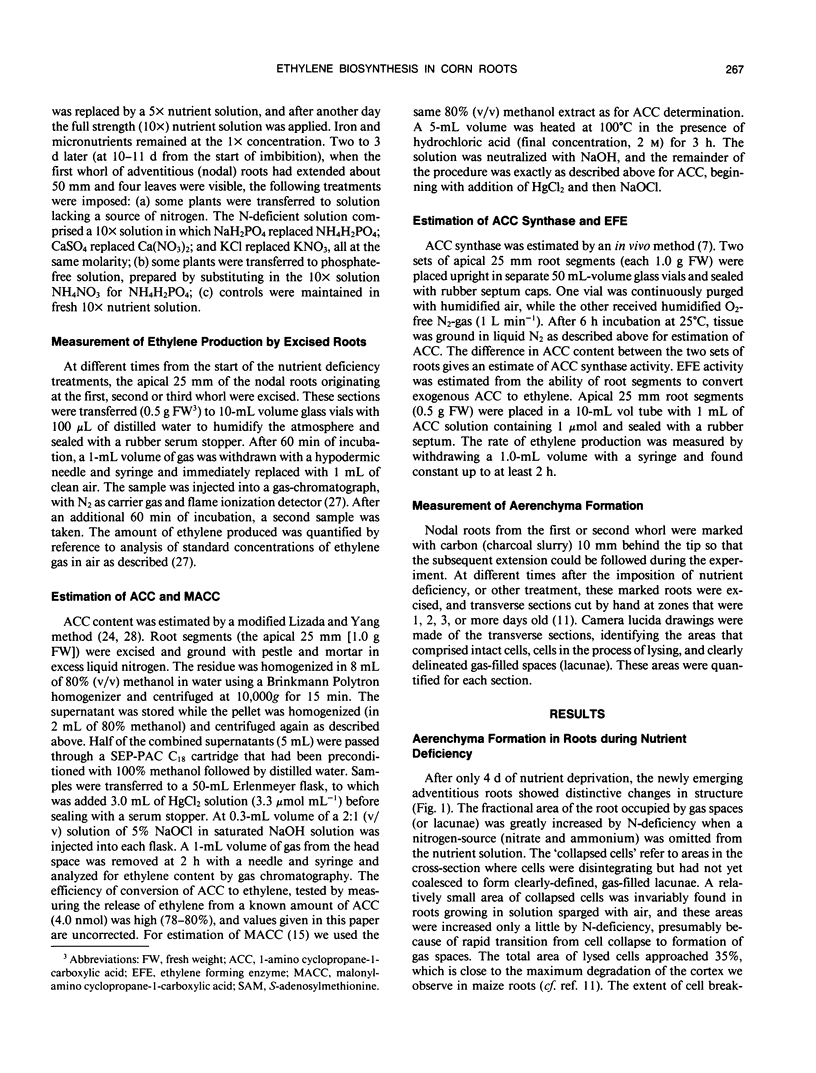
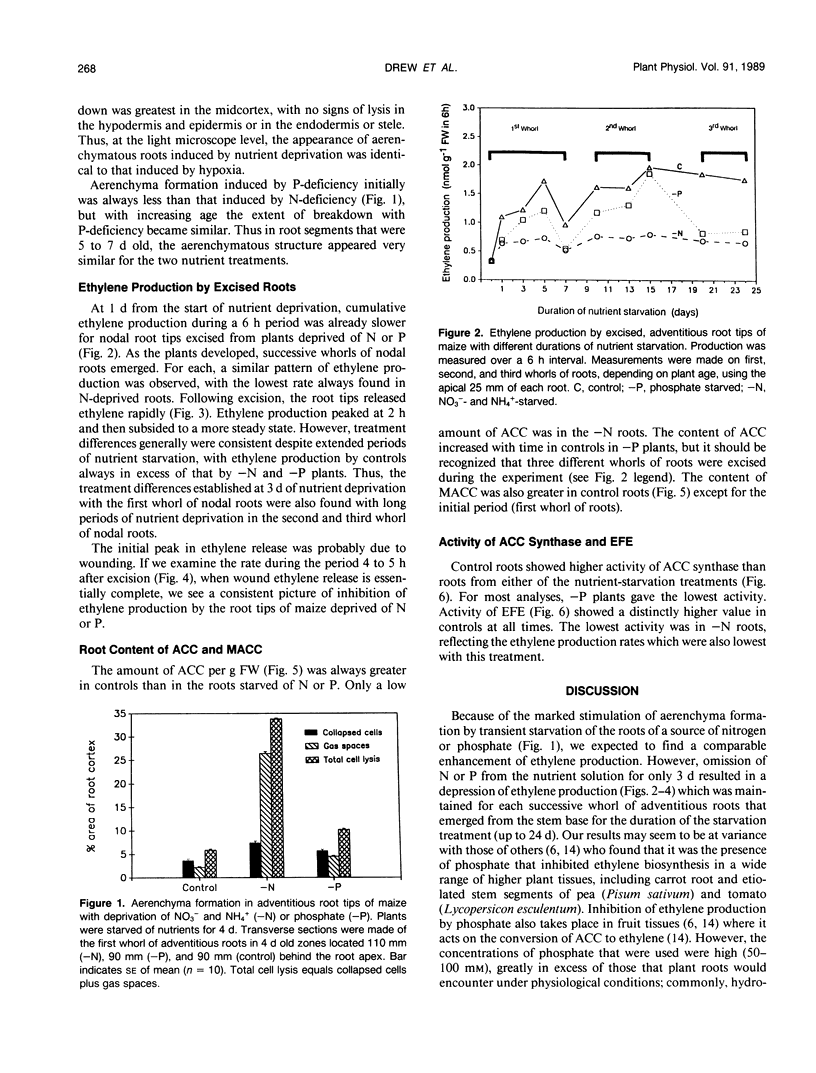
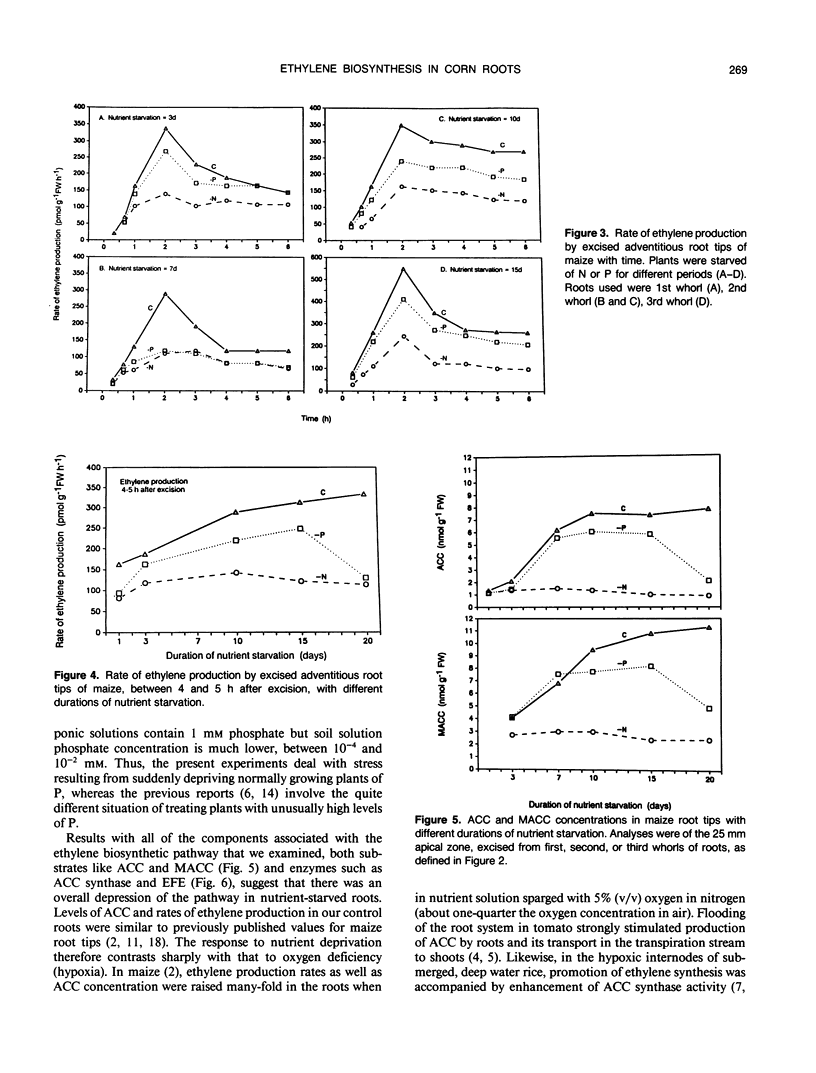
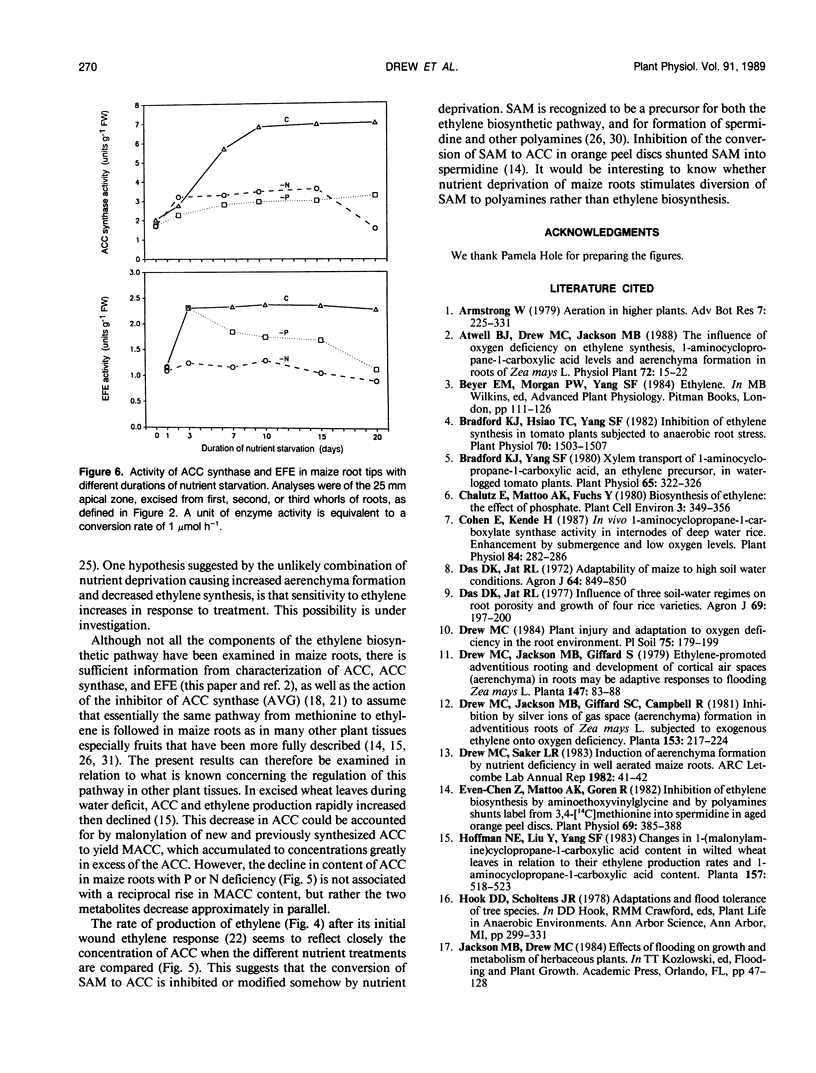

Selected References
These references are in PubMed. This may not be the complete list of references from this article.
- Bradford K. J., Hsiao T. C., Yang S. F. Inhibition of ethylene synthesis in tomato plants subjected to anaerobic root stress. Plant Physiol. 1982 Nov;70(5):1503–1507. doi: 10.1104/pp.70.5.1503. [DOI] [PMC free article] [PubMed] [Google Scholar]
- Bradford K. J., Yang S. F. Xylem Transport of 1-Aminocyclopropane-1-carboxylic Acid, an Ethylene Precursor, in Waterlogged Tomato Plants. Plant Physiol. 1980 Feb;65(2):322–326. doi: 10.1104/pp.65.2.322. [DOI] [PMC free article] [PubMed] [Google Scholar]
- Cohen E., Kende H. In vivo 1-aminocyclopropane-1-carboxylate synthase activity in internodes of deepwater rice : enhancement by submergence and low oxygen levels. Plant Physiol. 1987 Jun;84(2):282–286. doi: 10.1104/pp.84.2.282. [DOI] [PMC free article] [PubMed] [Google Scholar]
- Even-Chen Z., Mattoo A. K., Goren R. Inhibition of ethylene biosynthesis by aminoethoxyvinylglycine and by polyamines shunts label from 3,4-[C]methionine into spermidine in aged orange peel discs. Plant Physiol. 1982 Feb;69(2):385–388. doi: 10.1104/pp.69.2.385. [DOI] [PMC free article] [PubMed] [Google Scholar]
- Lizada M. C., Yang S. F. A simple and sensitive assay for 1-aminocyclopropane-1-carboxylic acid. Anal Biochem. 1979 Nov 15;100(1):140–145. doi: 10.1016/0003-2697(79)90123-4. [DOI] [PubMed] [Google Scholar]
- Morgan P. W., Durham J. I. Ethylene Production and Leaflet Abscission in Mèlia azédarach L. Plant Physiol. 1980 Jul;66(1):88–92. doi: 10.1104/pp.66.1.88. [DOI] [PMC free article] [PubMed] [Google Scholar]
- Métraux J. P., Kende H. The role of ethylene in the growth response of submerged deep water rice. Plant Physiol. 1983 Jun;72(2):441–446. doi: 10.1104/pp.72.2.441. [DOI] [PMC free article] [PubMed] [Google Scholar]
- Nieder M., Yip W. K., Yang S. F. Interferences and specificity of the 1-aminocyclopropane-1-carboxylic Acid assay with the hypochlorite reagent. Plant Physiol. 1986 May;81(1):156–160. doi: 10.1104/pp.81.1.156. [DOI] [PMC free article] [PubMed] [Google Scholar]
- Saglio P. H., Drew M. C., Pradet A. Metabolic Acclimation to Anoxia Induced by Low (2-4 kPa Partial Pressure) Oxygen Pretreatment (Hypoxia) in Root Tips of Zea mays. Plant Physiol. 1988 Jan;86(1):61–66. doi: 10.1104/pp.86.1.61. [DOI] [PMC free article] [PubMed] [Google Scholar]
- Slocum R. D., Kaur-Sawhney R., Galston A. W. The physiology and biochemistry of polyamines in plants. Arch Biochem Biophys. 1984 Dec;235(2):283–303. doi: 10.1016/0003-9861(84)90201-7. [DOI] [PubMed] [Google Scholar]


